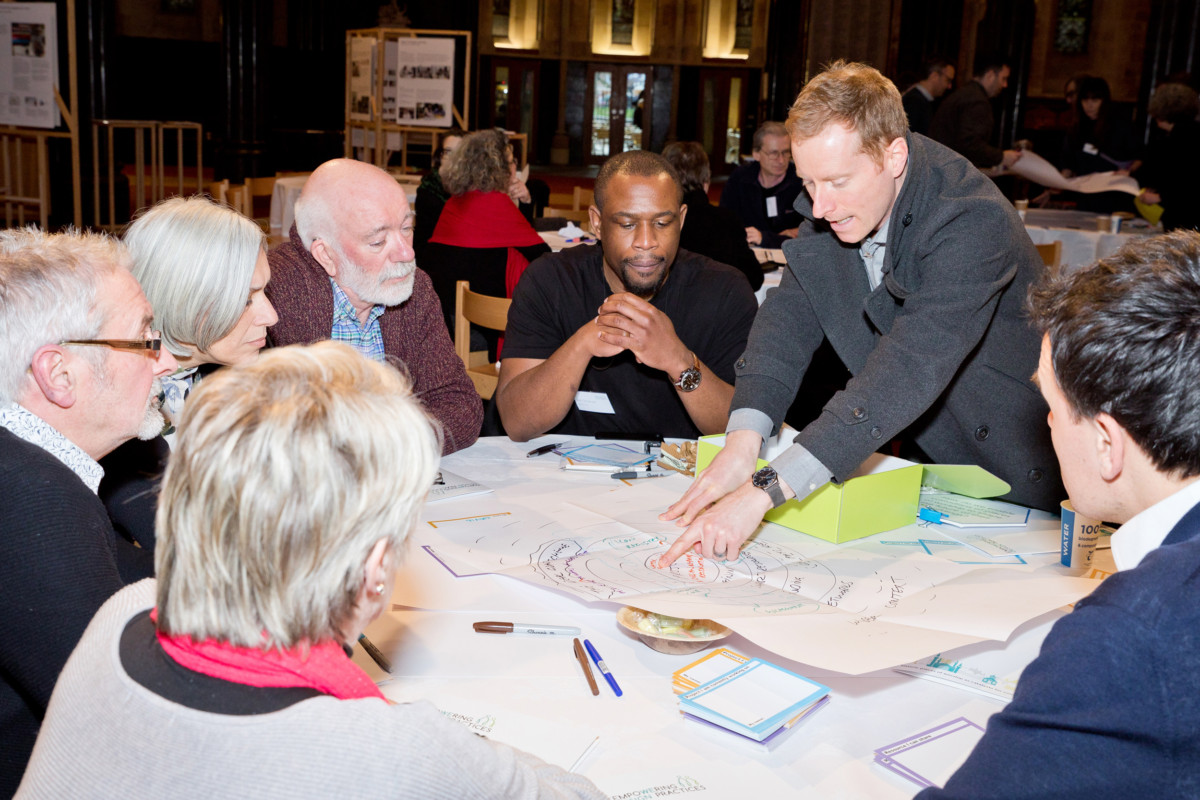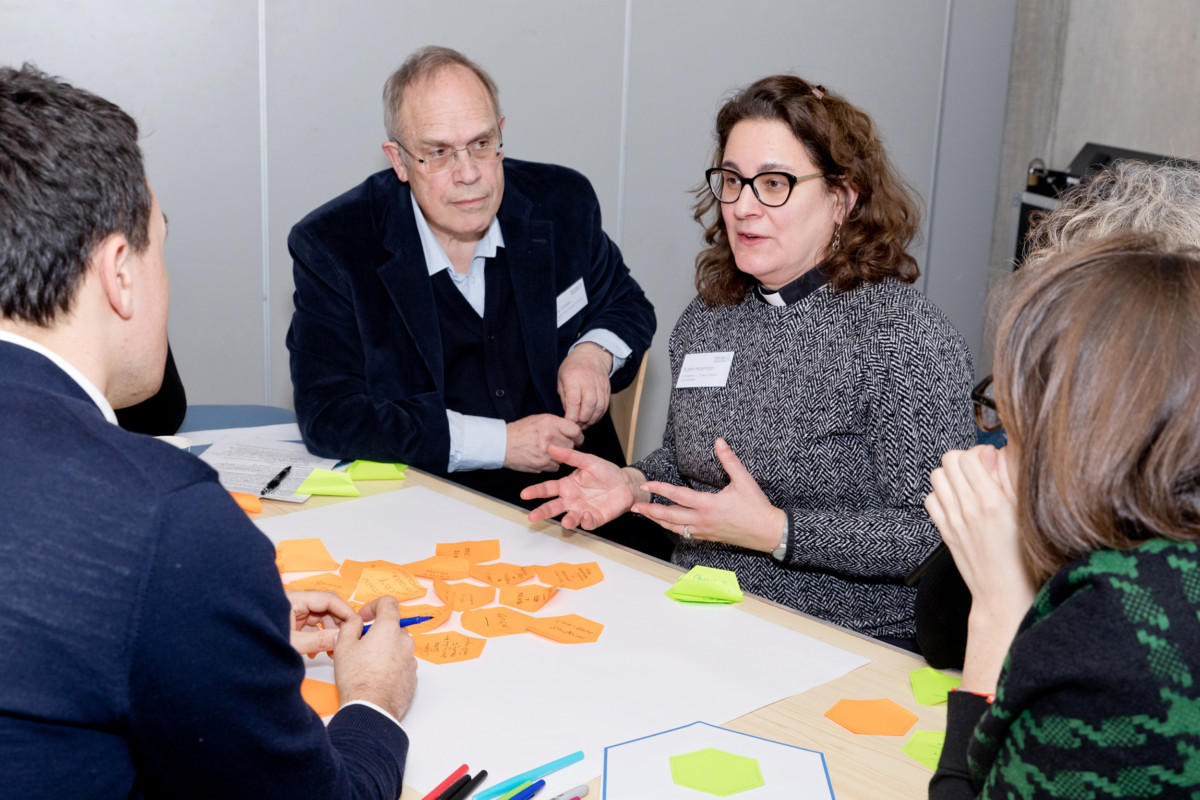Empowering Design Practices is a seven-year action research project to support and explore how community-led design can help empower those who look after historic places of worship to create more open, vibrant and sustainable places.
Project date: 2014-2021
The Story
This seven-year collaborative research project is the largest project in the Design and Communities strand funded by the Arts and Humanities Research Council (AHRC). It explores how community-led design can help empower those who look after historic places of worship to create more open, vibrant and sustainable places that respect and enhance their heritage. Working within this context, the project aims to develop tools, resources and training to support community-led design practice and research to support any community-led design process for the built environment. The project is a collaboration between The Open University, The Glass-House Community Led Design, Historic England, National Lottery Heritage Fund, Historic Religious Buildings Alliance, working with consultants Stephen Smith (Wright & Wright Architects), Leo Care (Live Works) and Becky Pane.
Understanding community-led design in historic places of worship
EDP is exploring the current landscape of historic places of worship and communities leading change within them through a combination of desk research and interviews, building visits and workshops with groups. We hope to understand what values inspire and hinder the wider use of historic places of worship and what benefits and impacts community-led design practices can bring.
Developing new practices
Working with live projects, we are co-designing new practices and providing hands-on support to communities to help them lead projects to transform their historic places of worship. In this work we draw on a variety of design and other creative research methods to investigate how inclusive design processes can support a diverse spectrum of people, organisations and places.
The project team has worked with over 60 places of worship around the country, including extensive collaborations throughout the project with:
ISRAAC Somali Community Association, Sheffield
Bow Church, Bow, London
St Peter’s Church, Chester
Building national capacity for community-led design practice
Drawing on learning from the project and the practices of partners, we are developing open educational resources and training for students, communities and the professionals and support bodies who work with them.


Impact
This project has seen us work with over 60 places of worship around the country in a variety of ways. The project team has worked together to:
- deliver 65 workshops and events
- support 55 communities of multiple faiths and denominations
- provide direct training and specialist support to 410 people
- directly engage 1250 members of the public in design-related public activities
- support 6 student projects linking The University of Sheffield and UCL Bartlett with community-led design projects in historic places of worship
- developed a wide spectrum of training modules and practical resources for community groups, professionals and students.
Mid-term review
In May 2017, the Open University contracted an independent consultant, Ashley Jay Brockley of Green Spiral Consulting, to conduct a mid-term impact review for the Empowering Design Practices research project. The objective of the work was to review the impact of the project on local groups, organisations and institutions that have engaged in project activities, and to inform the development of a framework for capturing and evaluating impact in the long term. The review covered project activities delivered up to the end of August 2018.
Data collected for this review provided evidence for the following:
Direct impact on people, communities and their projects:
The study identified a number of direct impacts on people and practices, such as for example that people were able to work together more collaboratively, change their perceptions about their buildings or projects and what is possible to be achieved, and acquire new skills allowing them to engage in design more effectively.
Direct impacts leading to socio-economic benefits:
The study also identified a number of cases where approaches, outputs and ideas from the EDP project led to wider socio-economic benefits, such as creating better connections with other organisations, and securing funding from external sources to carry out adaptation or refurbishment projects.
For more details see the full report
The mid-term review focused on people who look after places of worship. Future impact evaluation will include other beneficiaries such as students participating in live projects, professionals attending EDP activities or using EDP methods or resources, learners taking the EDP online course and researchers themselves.
Explore
For updates on project activities and outputs check the EDP website and Twitter.
EDP Live
In February we held a conference which explored and celebrated the role of communities in shaping sustainable futures for historic places of worship. We presented the learning and resources developed through the project to support community leadership and engagement in design. The event also offered opportunities for knowledge exchange and networking between community groups, professionals and organisations that work in the fields of faith, heritage, architecture and community development and facilitated the generation of ideas and propositions for the future.
Read about the event in our event in our Empowering Design Practices Live Event & Exhibition Catalogue
A film produced by Emma Crouch of isayRAAR, beautifully captures the day and they key messages that emerged. Watch the film here.
EDP Resources
The EDP project has been producing a number of resources (films, case studies, guidance, tools and an online course) drawing on research in community led-design and the experience of working with over 45 groups around the country looking after historic places of worship.
These resources are primarily designed for groups who look after historic places of worship and wish to work with their community in order to design changes to their buildings that will help better serve their needs and aspirations. However, these resources are also relevant to any community group wishing to lead a placemaking project in their locale, as well as to design professionals (architects), community development practitioners, students and academics.
The explore these resources, visit the EDP website or the Resources section of this website.
Explore Design: Community Buildings
Designing Places with People: Tips for Your Community Engagement Strategy
Designing Places With People: Making Community Engagement Count
Designing Places With People: Testing Ideas for Your Community Building
Using Digital Media in Your Community Led Design Project
Digital Media and Community Led Design: Creative Tips for your Project
Preparing to Work with Architects: a Beginners Guide for Community Clients
On our blog
EDP Live: celebrating community-led design in historic places of worship
Bow moves: what would you do with this space?
Gaming as a design engagement tool
Layers of Community: Design Training Sheffield 2018
Bow Study Tour: Reinventing Places of Worship
Learning about and exploring the potential of design – EDP Design Training in Manchester
Helping groups to rediscover their buildings through design training







